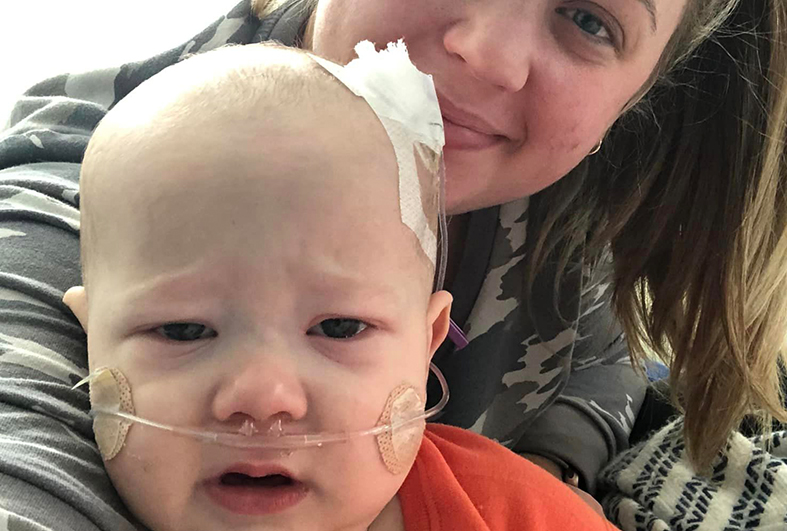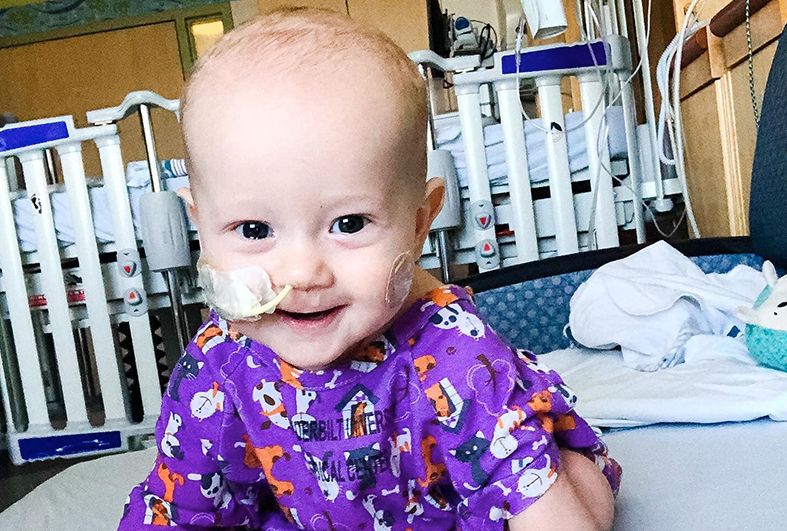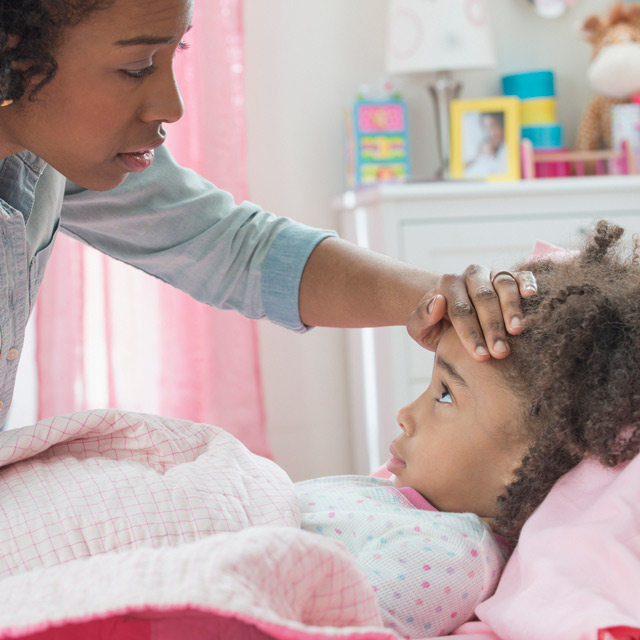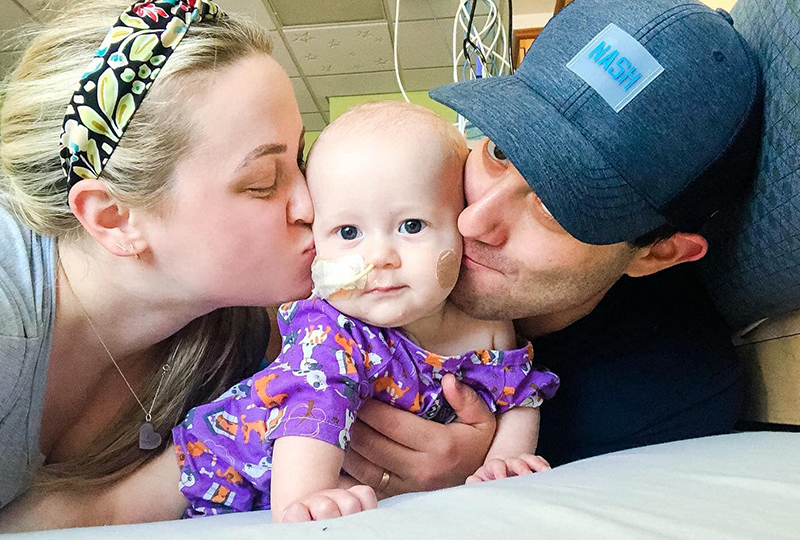Within a few weeks of starting daycare, their son came home with RSV, which at first looked like a cold but led to several days in the hospital.
After managing to avoid viral illnesses and COVID-19 during the pandemic, we braced ourselves as we sent our 6-month-old son to daycare for the first time. Within a few weeks, our son, Gray, caught his first cold or so we thought.
What started out as a runny nose slowly worsened. Gray developed a raspy cough with wheezing and a high fever. His irritability and difficulty breathing increased.
It appeared like a classic case of respiratory syncytial virus infection (RSV) bronchiolitis. Most common symptoms of RSV in babies include:
- Runny nose
- Coughing
- Wheezing
- Decrease in appetite
- Decreased interest in daily activities and play
- Fever
- Difficulty breathing
- Irritability or general discomfort
In all honesty, because he is a child of health care workers, we probably kept Gray home longer than we should have. Around day three of his illness, I remember my husband saying, “I think we’ve done all we can here. It’s time to take him in.”
We packed our diaper bag and headed to the Emergency Department at Monroe Carell Jr. Children’s Hospital at Vanderbilt where we hoped Gray would be able to receive fluids and have his secretions suctioned out. It wasn’t until we were admitted that I learned that we were likely not leaving for several days.

And my worst nightmare – we were potentially about to watch Gray become even sicker. Something different about RSV bronchiolitis compared to upper respiratory infections is that some children with bronchiolitis tend to become sicker around day four or five of their illness. At the time, I couldn’t imagine it getting worse.
The next few days were a blur. Gray’s condition deteriorated. He was placed on oxygen to support his breathing and within a few days also required a feeding tube due to his lack of appetite. He lost nearly five pounds during his week-long hospital stay. Slowly, around day seven of his illness, his personality and appetite started returning. He looked more like my baby again.

What parents can do about RSV in babies
With their young immune systems, infants and toddlers are at a greater risk of developing RSV bronchiolitis. Premature babies as well as children with asthma and congenital heart disease are at an even greater risk. RSV is extremely contagious because it’s a viral illness that is spread through coughing, sneezing and other exposures to viral droplets, such as contaminated surfaces (doorknobs, toys). The danger of RSV in babies is it may be easily spread at daycares, school or playdates.
As parents, we know our children best. While relieving their symptoms and discomfort with supportive care at home, including humidifiers and acetaminophen (if they are old enough for the latter), it’s important to monitor your child’s illness progression. Be an active member of your child’s health care team. Use a tracking app or piece of paper to keep track of their daily behaviors:
- Ensure your child has a minimum of three wet diapers.
- Monitor their fluid intake to prevent dehydration.
- Use a bulb syringe to remove mucus from your child’s nose and mouth as often as possible.
- Reach out to your health care provider to let them know your child is sick.
Now almost 18 months later, Gray is an active 2-year-old. He’s hitting his milestones and is truly the happiest little guy. I learned so much about advocating for my child during that scary and uncertain time and about my strength as his mother.
This post was written by Taylor Santarelli, a new mom and an employee of Vanderbilt Health in the marketing department. In her spare time, she enjoys taking her son to the park.

How to help prevent RSV
Pediatrician Dr. James Antoon, who specializes in respiratory illness at Monroe Carell Jr. Children’s Hospital at Vanderbilt, offers these tips:
- Make sure frequent and proper hand-washing is happening.
- Cough and sneeze into elbows.
- Mask around people who are sick.
- Stay home and keep your child home when sick.
- Get recommended flu and COVID-19 vaccinations for your children and yourself to help prevent multiple infections at the same time, which can increase the severity of the illness.

